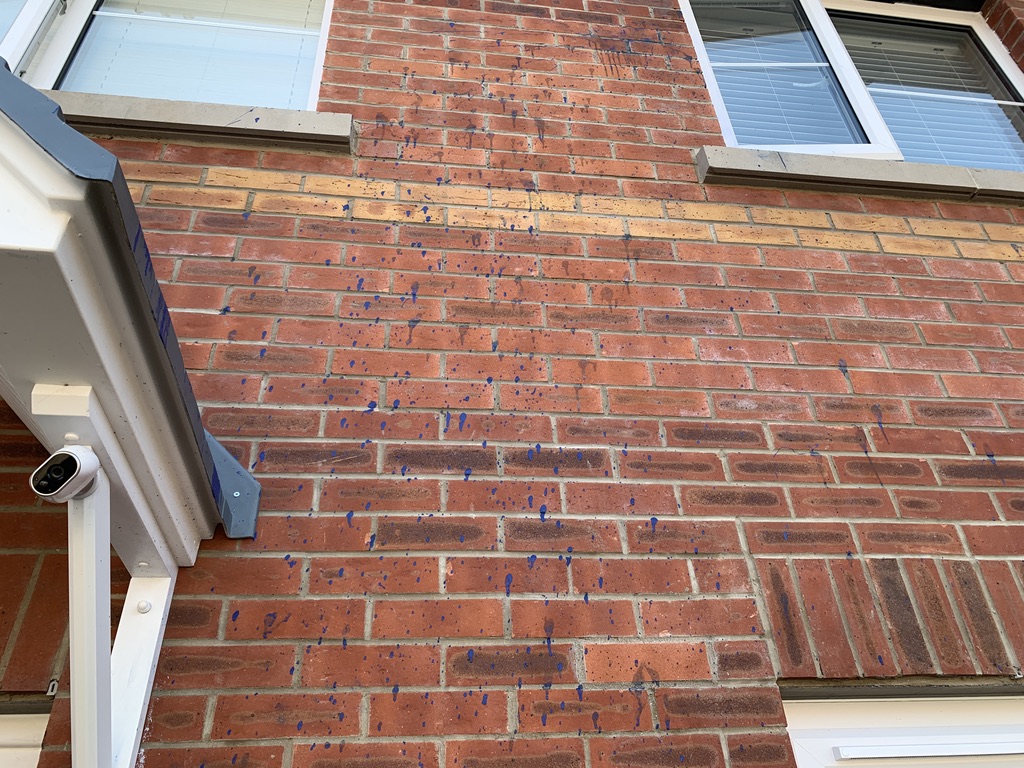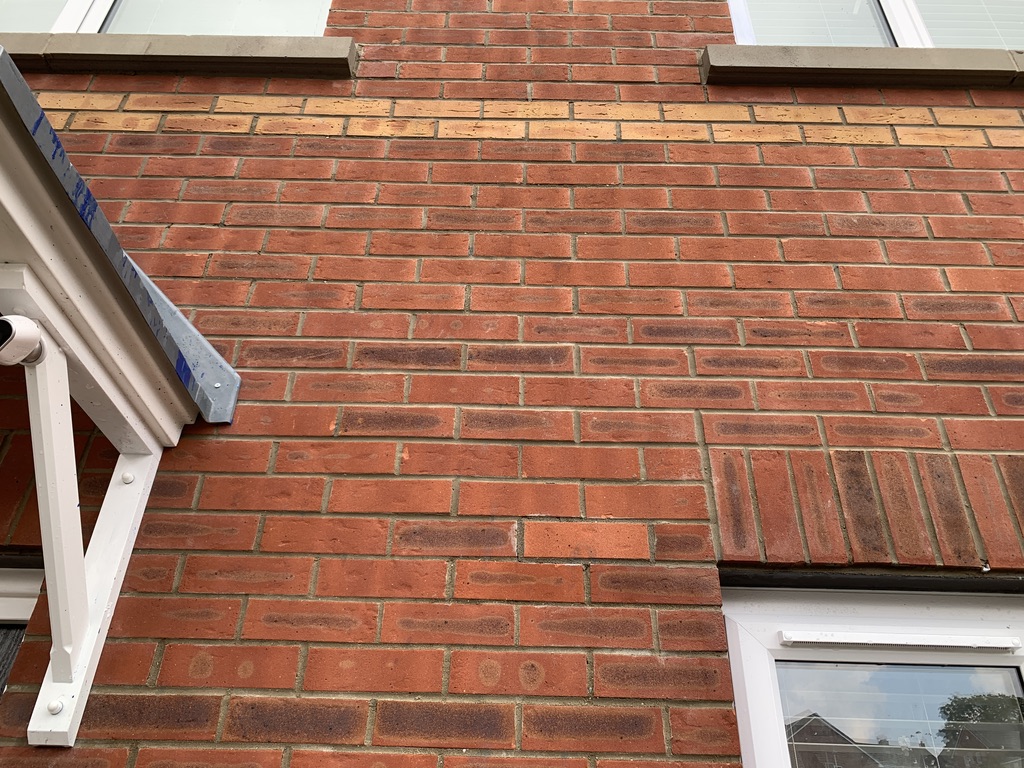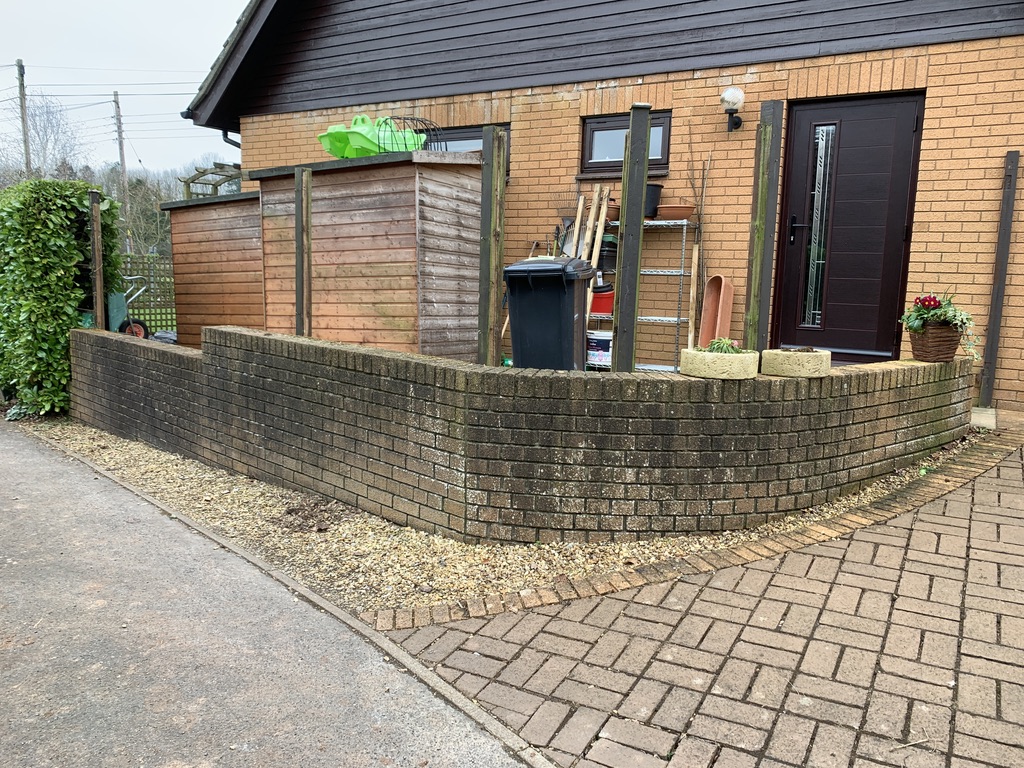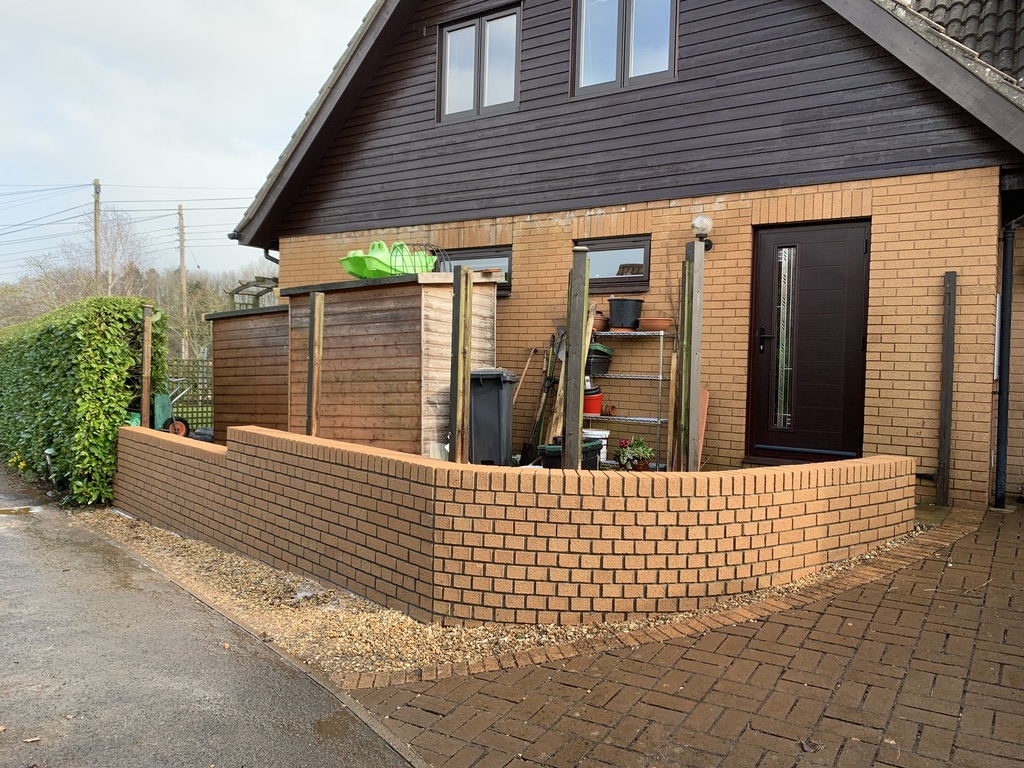How to Remove Stains from Bricks: The Complete Guide
Brick exteriors are known for their durability and timeless appeal, but over time, they can accumulate a variety of stains and discolouration that diminish their appearance. From algae and moss to graffiti and paint splashes, stains on brick can be unsightly and sometimes damaging if left untreated. In this guide, we’ll walk you through the different types of brick stains commonly found on exterior surfaces and the best methods to remove them.
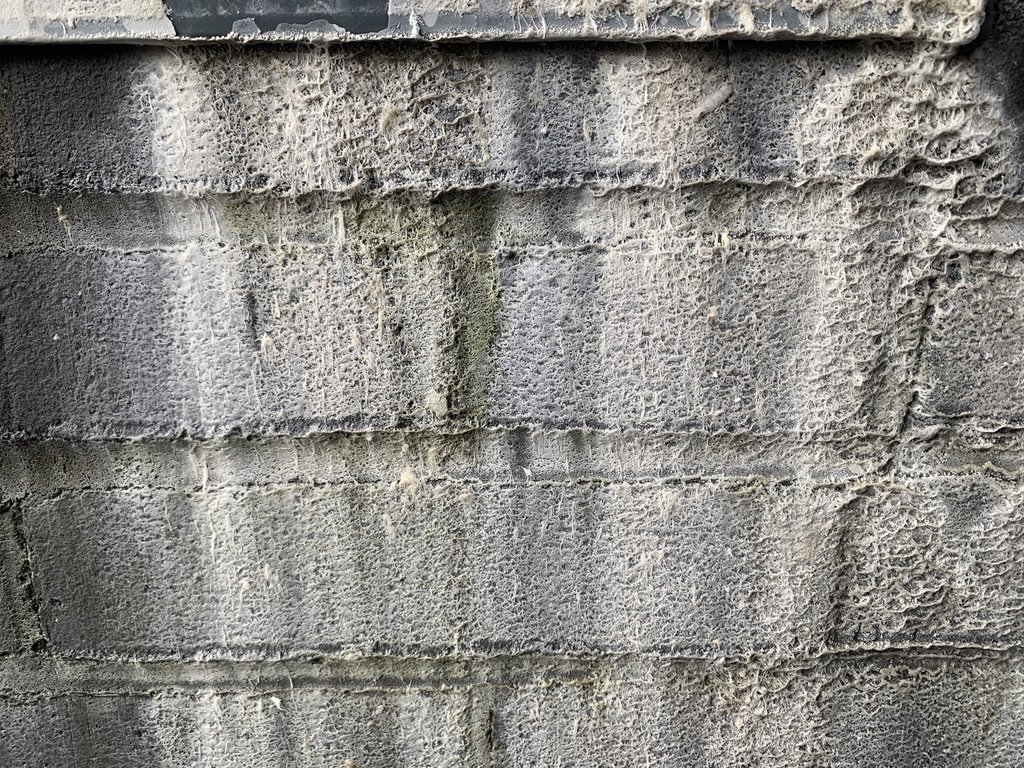
Common Types of Stains on Exterior Brick Surfaces
- Algae, Lichen, and Moss Growth
- Appearance: Green or black patches on your brickwork, typically in shaded or damp areas.
- Cause: Algae, lichen, and moss thrive in moist environments and can spread quickly across exterior walls if not properly cleaned.
- Efflorescence
- Appearance: White, powdery residue on brick surfaces.
- Cause: Efflorescence occurs when water seeps through the brick, dissolving salts that are then deposited on the surface as the water evaporates. This is common in areas with poor drainage or rising damp.
- Carbon Sulphation
- Appearance: Black, sooty deposits, often found on bricks near roads or industrial areas.
- Cause: Sulphur compounds from vehicle emissions or industrial pollution mix with rainwater, leaving behind a black crust on brick surfaces, commonly seen in urban environments.
- Paint Splashes and Graffiti
- Appearance: Unwanted paint or spray paint marks on brick surfaces.
- Cause: These marks are often accidental from painting nearby structures, or deliberate acts of vandalism such as graffiti.
Removing Stains from Bricks
Now that we’ve covered the common types of stains, let’s dive into how to remove them. When cleaning bricks, low-pressure cleaning methods are always preferable to high-pressure blasting to avoid damaging the brick surface or mortar.
1. Algae, Lichen, and Moss Removal
- Solution: A gentle biocide treatment is highly effective for removing organic growth like algae, lichen, and moss. The surface is typically pre-treated with a biocide solution, which kills the growth at its roots.
- Method: Apply the solution, let it sit for the recommended time, then soft wash (low pressure) the surface to rinse it away. This ensures that the surface is cleaned without damaging the brick.
2. Efflorescence Removal
- Solution: Efflorescence can be tricky, but it’s generally removed with water and a soft brush. If the stain is persistent, a mild acid-based cleaner designed for bricks can help dissolve the salts.
- Method: Start by scrubbing the affected area with a dry, stiff brush to remove the powder. If the stain persists, apply the cleaner and scrub gently, then rinse with low-pressure water.
3. Carbon Sulphation Removal
- Solution: Carbon sulphation is more stubborn than other stains and may require a specialized brick cleaner or restoration gel to dissolve the carbon deposits.
- Method: Apply the restoration gel, allow it to dwell on the surface, then remove it with a soft washing technique. Avoid high pressure to prevent driving the contaminants deeper into the brick.
4. Paint Splashes and Graffiti Removal
- Solution: Graffiti removal requires a specific paint remover designed for porous surfaces like brick. Depending on the type of paint, it may take multiple applications to fully remove.
- Method: Apply the graffiti remover or paint stripper, allow it to break down the paint, and then use a low-pressure wash to gently remove the residue. For tougher stains, a second round may be necessary.
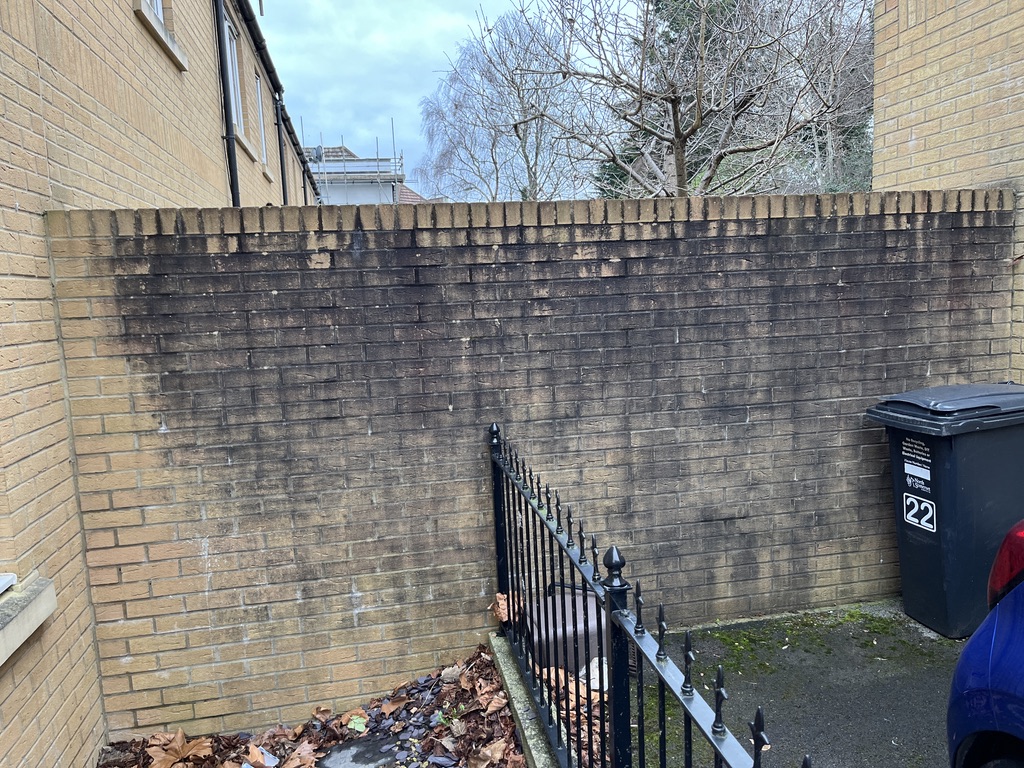
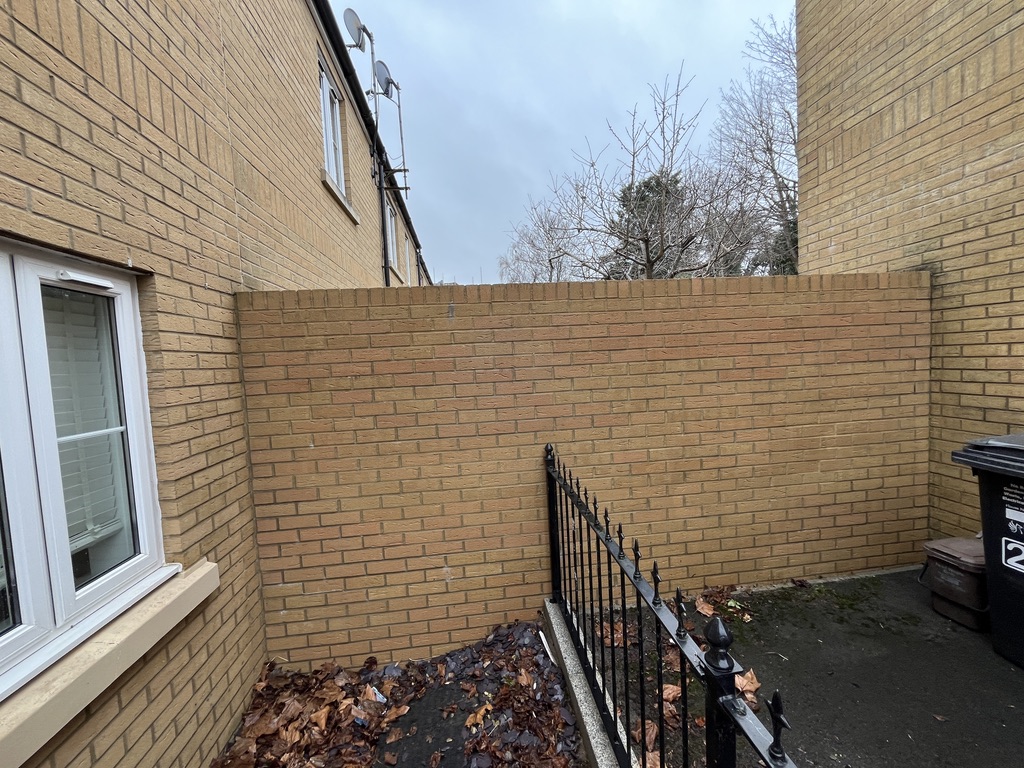
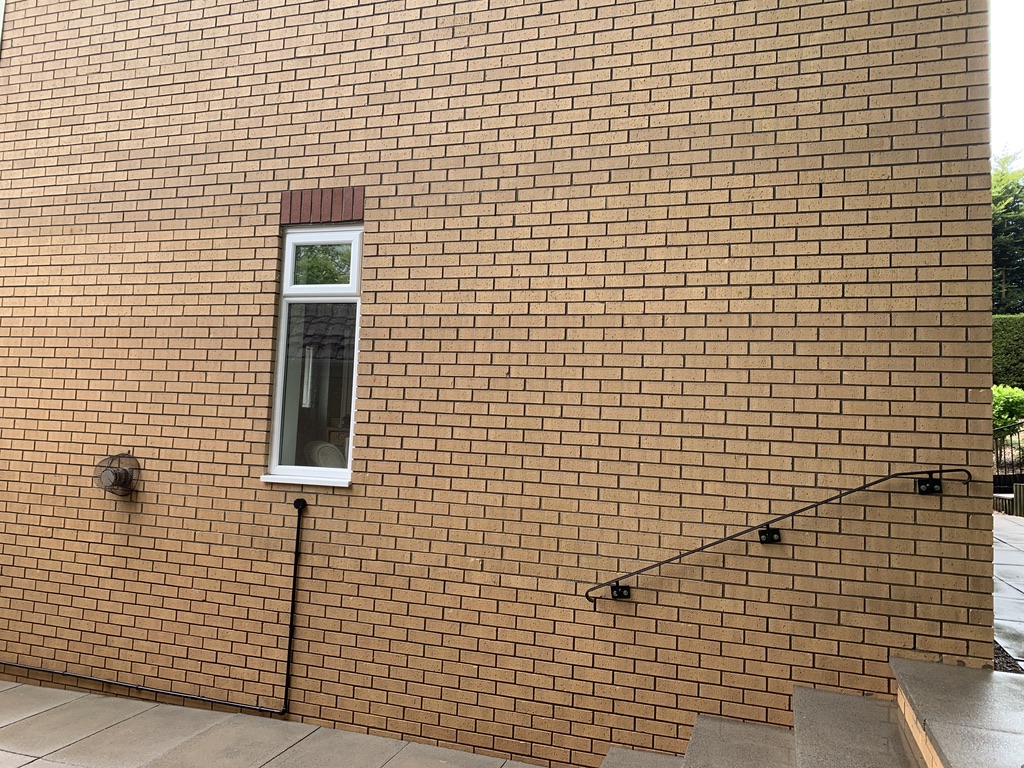
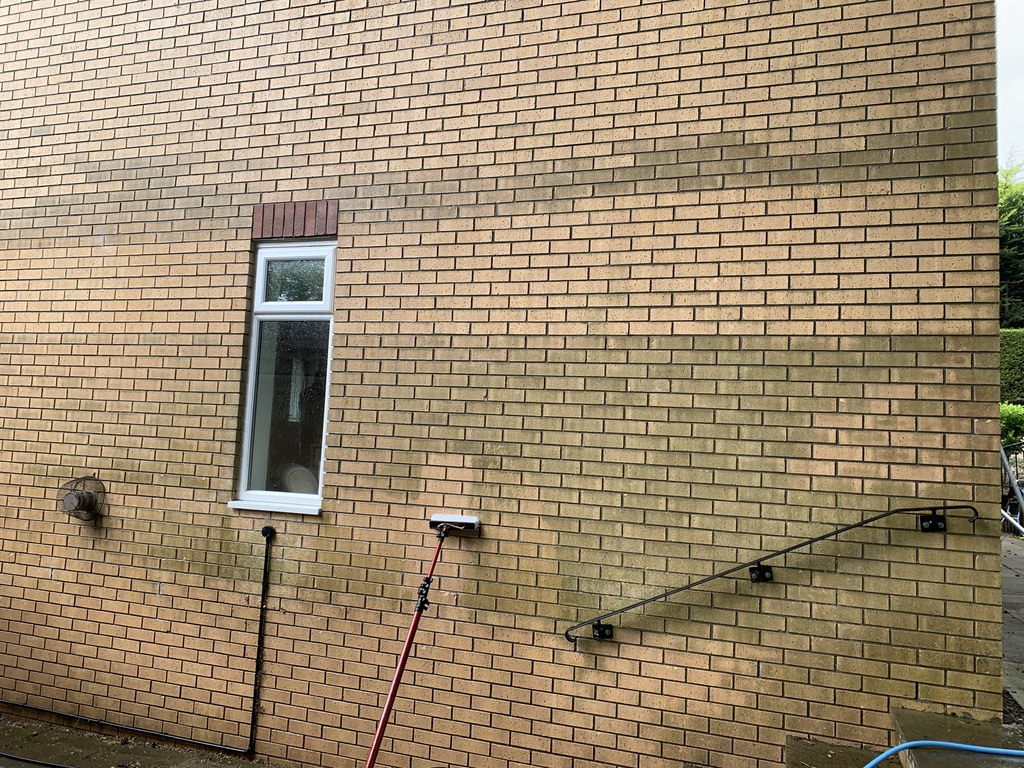
Why Low Pressure is Better Than High Pressure
Many people assume that blasting brickwork with high-pressure water will quickly remove stains, but this method can cause more harm than good. High-pressure cleaning can:
- Erode the Brick Surface: Over time, bricks can become soft or worn down, and high-pressure water can erode the brick and mortar, leading to structural damage.
- Push Contaminants Deeper: High-pressure blasting can drive stains or contaminants deeper into the pores of the brick, making them even harder to remove.
Using low-pressure methods, like soft washing combined with appropriate cleaning solutions, is a safer and more effective way to clean brickwork without causing damage. Soft washing allows the cleaning solution to do the hard work, breaking down stains so that they can be rinsed away gently.
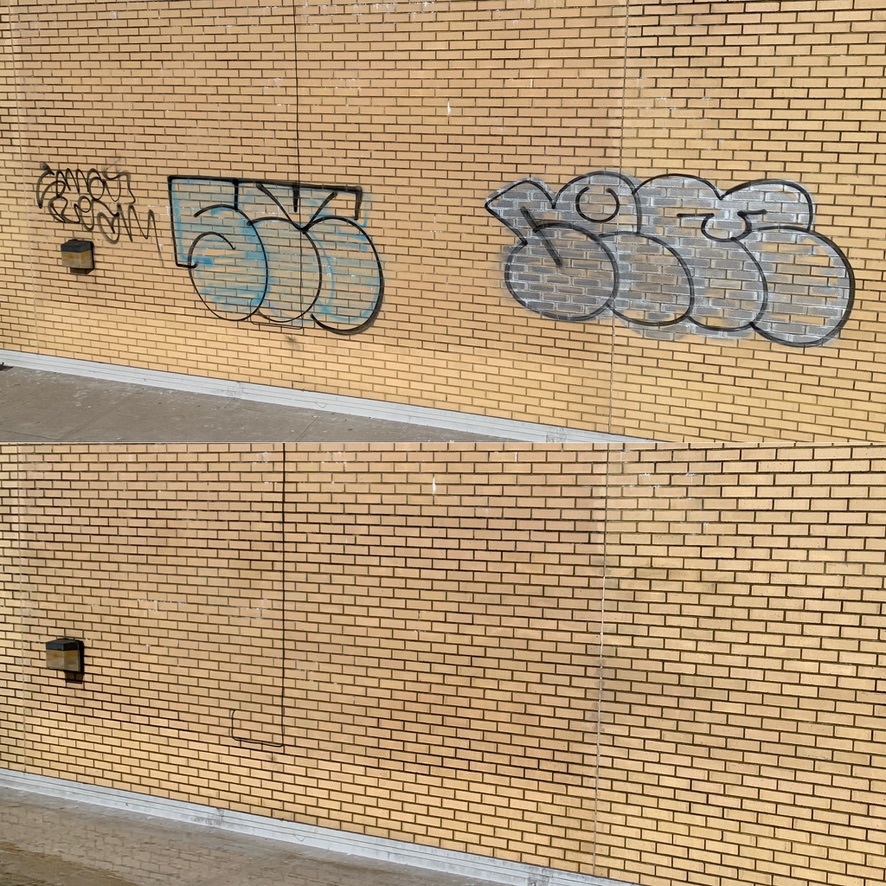
Trust the Experts: Leeksons Exterior Cleaning
At Leeksons Exterior Cleaning, we’ve been cleaning bricks and exteriors for over 25 years, providing excellent results for homes and businesses across South Wales and the South West of England. Our team uses safe, low-pressure cleaning techniques to ensure your brickwork is restored without damage. From removing stubborn moss and algae to getting rid of graffiti, we’ve handled it all.
We serve all major cities and towns, including:
- South Wales: Cardiff, Swansea, Newport, Bridgend, and Chepstow.
- South West: Bristol, Bath, Gloucester, Exeter, Taunton, Chippenham and Cheltenham.
Our years of experience and professional service ensure that your home’s brickwork will look fresh and clean, adding years to the life of your exterior.
Contact Leeksons Exterior Cleaning Today
If your brick surfaces are showing signs of staining or weathering, don’t wait for the problem to get worse. Contact Leeksons Exterior Cleaning for a professional, reliable solution. With our low-pressure cleaning methods and expert team, your brickwork will be in safe hands. We serve both residential and commercial clients across South Wales and the South West, helping you restore the beauty of your property.
For more information, or to schedule a consultation, visit our website or give us a call today!
